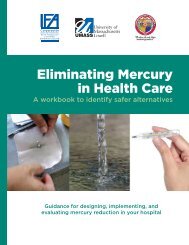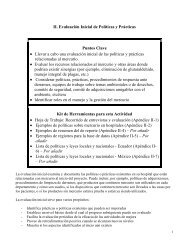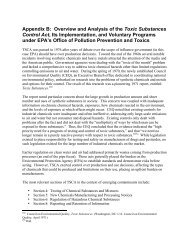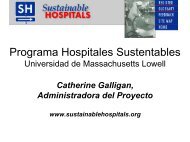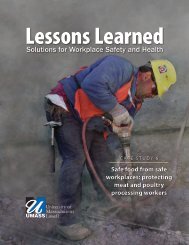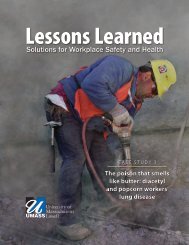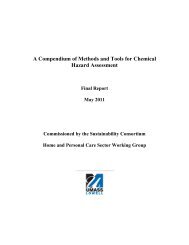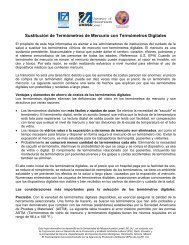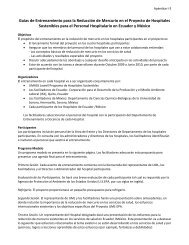Download - The Lowell Center Framework for Sustainable Products
Download - The Lowell Center Framework for Sustainable Products
Download - The Lowell Center Framework for Sustainable Products
You also want an ePaper? Increase the reach of your titles
YUMPU automatically turns print PDFs into web optimized ePapers that Google loves.
10 | <strong>Lowell</strong> <strong>Center</strong> <strong>for</strong> <strong>Sustainable</strong> Production | University of Massachusetts <strong>Lowell</strong><br />
A more ideal product life cycle is illustrated in Figure 2.<br />
Ideally, resources and waste are managed in closed-loop cycles,<br />
with products being reused, recycled and re-manufactured.<br />
Because products have such wide-ranging impacts throughout<br />
their life cycle, it is critical that the design process aim<br />
<strong>Sustainable</strong> products minimize environmental<br />
and social costs throughout the product lifecycle<br />
and aim to maximize environmental<br />
and social benefits to communities, while<br />
remaining economically viable.<br />
FIGUrE 2 Product Life Cycle (cyclical)<br />
to minimize these effects. It has been estimated that 70%<br />
of the life cycle cost of products is determined at the design<br />
stage. 20 Manufacturers are becoming increasingly responsible<br />
<strong>for</strong> life cycle impacts of the products they produce, both<br />
because of legislation that entails extended producer responsibility<br />
a and adverse publicity that is generated from news<br />
such as sweatshop conditions or illegal dumping of waste.<br />
An analysis of the product life cycle can help make visible<br />
potential environmental and social impacts so that they<br />
can be designed out to avoid these hazards.<br />
<strong>Sustainable</strong> products minimize environmental and social<br />
costs throughout the product lifecycle and aim to maximize<br />
environmental and social benefits to communities, while<br />
remaining economically viable. <strong>Sustainable</strong> product design<br />
considers who makes the product, going beyond the basic<br />
health and safety considerations<br />
that are encompassed in eco design<br />
criteria, such as reducing the use<br />
of toxic materials.<br />
Product Life Cycle<br />
Labor, Energy & Materials Use<br />
Waste<br />
Product<br />
Manufacture/<br />
Remanufacture<br />
Waste<br />
Packaging/<br />
Distribution<br />
Labor<br />
Energy<br />
Materials<br />
Recycle/<br />
Compost/<br />
Disassemble<br />
Waste<br />
reuse<br />
Waste<br />
Product Use/<br />
Consumption<br />
Workers often pay the price <strong>for</strong><br />
economic pressures on manufacturers<br />
to cut corners in order to meet<br />
demand <strong>for</strong> low cost products. Even<br />
if toxic inputs are eliminated from<br />
a product design, workers may be<br />
subjected to unhealthy working conditions,<br />
such as poor air quality, poor<br />
ergonomic design of work stations,<br />
involuntary overtime, and excessive<br />
pace. A product that is safe <strong>for</strong><br />
consumers but presents significant<br />
hazards <strong>for</strong> those involved in its<br />
production is not a fully sustainable<br />
product. Similarly, a product that<br />
is polluting in its production and<br />
there<strong>for</strong>e harms the local community<br />
is not a fully sustainable product,<br />
even if this impact occurs far from<br />
where the product is consumed/<br />
used.<br />
a For example, the Waste Electrical and Electronic Equipment (WEEE) Directive, enacted by the European Union in 2003, requires electronic equipment<br />
producers to take back their products at the end of life. This directive is intended to encourage design <strong>for</strong> disassembly and remanufacture and also to support<br />
designs that can be repaired, reused and recycled.



